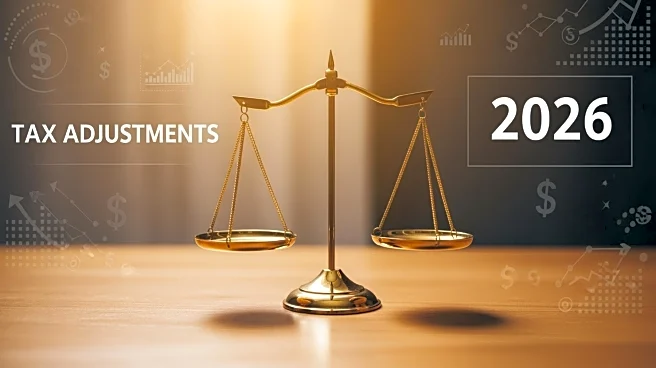What's Happening?
The Internal Revenue Service (IRS) has announced changes to the tax brackets for 2026, reflecting adjustments for inflation. These changes will affect the amount of tax individuals and businesses will pay
in the upcoming year. The adjustments are part of the IRS's routine updates to account for inflationary pressures, ensuring that tax brackets remain aligned with economic conditions. Caleb Silver, editor-in-chief of Investopedia, highlighted the most significant changes, which are expected to impact taxpayers across various income levels.
Why It's Important?
The IRS's adjustments to the tax brackets are crucial for taxpayers as they directly influence the amount of tax owed. These changes can affect disposable income, consumer spending, and overall economic activity. For individuals, understanding the new brackets is essential for financial planning and tax preparation. Businesses may also need to adjust their financial strategies to accommodate potential changes in tax liabilities. The broader economic implications include potential shifts in consumer behavior and spending patterns, which can influence economic growth and stability.
What's Next?
As taxpayers prepare for the 2026 tax season, it will be important for individuals and businesses to familiarize themselves with the new tax brackets and plan accordingly. Financial advisors and tax professionals are likely to play a key role in helping clients navigate these changes. Additionally, the IRS may continue to monitor economic conditions and make further adjustments if necessary. Stakeholders will be watching for any legislative developments that could impact tax policy and further influence the economic landscape.












